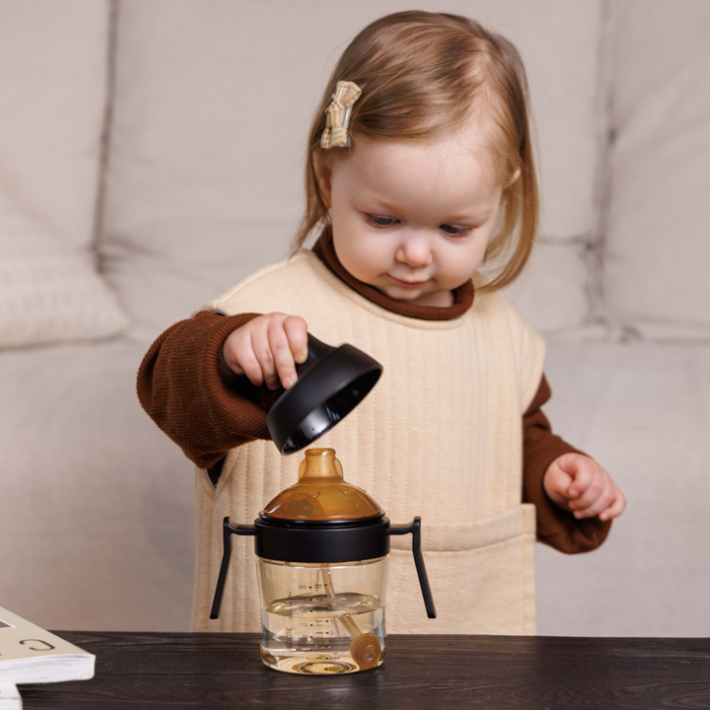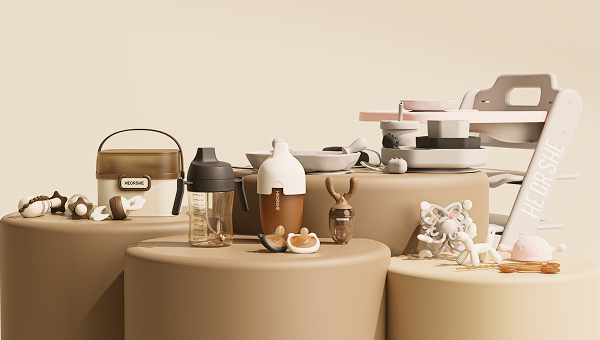As your baby grows and explores the world, transitioning from breastfeeding or bottle-feeding to drinking from a cup is a big milestone. Around 6 to 8 months, many parents start introducing sippy cups as part of their baby’s development journey. Choosing the best sippy cup for an 8 month old can be overwhelming with so many options on the market.
This comprehensive guide will help you understand why a sippy cup is essential at this stage, what to look for when selecting one, and highlight some of the best silicone sippy cups available today that combine safety, functionality, and ease of use.
Why Introduce a Sippy Cup for an 8 Month Old?
By 8 months, your baby’s motor skills and oral development have advanced significantly. This period is critical for encouraging independent drinking, helping your baby transition smoothly from breast or bottle to a regular cup later on.
Benefits of Using a Sippy Cup at 8 Months
Promotes Oral Motor Development: Using a sippy cup encourages babies to develop new muscle control different from sucking on a nipple.
Encourages Independence: Babies love to explore self-feeding, and a sippy cup designed for little hands allows them to hold and drink by themselves.
Prevents Bottle Dependence: Introducing sippy cups early reduces the risk of prolonged bottle use, which can lead to dental issues like tooth decay or improper oral development.
Reduces Spill Messes: A sippy cup controls spills better than an open cup, which is essential as babies learn to handle liquids.

Key Features to Look for in a Sippy Cup for 8 Month Old Babies
Choosing the right sippy cup is crucial for your baby’s safety, comfort, and ease of transition. Here are the main features parents should consider:
1. Material Safety and Quality
The cup should be made from BPA-free, phthalate-free, and food-grade materials. Silicone is an excellent choice because it is soft, flexible, and free from harmful chemicals.
2. Soft Spout or No-Spill Valve
At 8 months, babies are still developing their biting and sucking skills. A soft silicone spout or a valve system that prevents leaks is essential to avoid messes and protect delicate gums.
3. Easy to Hold Design
Look for cups with handles that are appropriately sized for small hands. This helps your baby learn to grip and drink independently.
4. Easy to Clean
Hygiene is vital. Choose a cup that can be easily disassembled for thorough cleaning and is dishwasher safe.
5. Transition Friendly
The best sippy cups are designed to support smooth transition stages — from nipple to spout to open cup. Some even have removable parts to convert as your baby grows.
6. Leak-Proof
Even the best sippy cup should be spill-proof, especially when your baby is on the move or just learning to use the cup.
Why Silicone Sippy Cups Are the Best Choice
Silicone has emerged as a top material for baby products due to its safety and practicality.
Benefits of Silicone Sippy Cups
- Soft and Gentle: Silicone spouts are soft on baby’s gums and teeth, reducing the risk of irritation or injury.
- Durable: Silicone can withstand chewing and biting better than harder plastics.
- Non-Toxic: Most silicone cups are free from BPA, PVC, phthalates, and other harmful chemicals.
- Flexible and Lightweight: Easy for babies to hold and carry around.
- Temperature Resistant: Silicone can handle hot and cold liquids without deforming.
- Easy to Clean: Silicone is non-porous, so it doesn’t harbor bacteria or odors.
Because of these advantages, many parents seek the best silicone sippy cup for their 8-month-old babies to ensure safety and comfort.
How to Introduce a Sippy Cup to Your 8 Month Old
Introducing a sippy cup takes patience and some strategy. Here are tips to make the process easier:
1. Start Slowly
Begin offering small amounts of water or milk in the sippy cup during meal times. Don’t expect your baby to master it immediately.
2. Let Your Baby Explore
Allow your baby to touch and play with the cup to get used to its feel.
3. Use Familiar Flavors
Fill the sippy cup with breast milk or formula at first so your baby is more comfortable.
4. Demonstrate How to Drink
Show your baby how you drink from a cup. Babies learn by imitation.
5. Be Consistent
Offer the sippy cup regularly, but don’t force it. Keep the experience positive.
6. Transition Gradually
As your baby improves, gradually reduce bottle feeding and increase cup use.
Common Challenges and How to Overcome Them
Baby Refuses the Sippy Cup
Try different types of cups or spouts (soft silicone vs. hard plastic). Sometimes babies need time to adjust.
Spills and Leaks
Choose the best silicone sippy cup with a proven leak-proof valve. Wipe up spills quickly and use easy-clean cups.
Difficulty Holding the Cup
Use cups with handles designed for small hands, and consider cups with silicone grips for better hold.

Why Avoid Traditional Hard Plastic Sippy Cups?
While plastic sippy cups are common, many parents are moving towards silicone for safety reasons:
Chemical Concerns: Some plastic cups may contain BPA or other harmful chemicals.
Hard Spouts Can Hurt: Hard plastic spouts can cause irritation or injury to tender gums.
Less Durable: Plastic can crack or degrade over time.
Environmental Impact: Silicone is more eco-friendly and reusable.
Frequently Asked Questions About Sippy Cups for 8 Month Olds
When Should I Start Using a Sippy Cup?
You can start introducing sippy cups anytime between 6-9 months, depending on your baby’s readiness.
Can My 8 Month Old Drink Milk From a Sippy Cup?
Yes, you can offer breast milk, formula, or water in the sippy cup.
How Do I Clean Silicone Sippy Cups?
Most silicone sippy cups are dishwasher safe. Hand wash with warm soapy water for daily cleaning and sterilize regularly.
Are Silicone Sippy Cups Safe to Freeze?
Yes, silicone can handle freezing temperatures, so you can store liquids if needed.
Conclusion
The journey to independent drinking is an exciting milestone for both parents and babies. When selecting a sippy cup for your 8 month old, safety, comfort, and ease of use are paramount. Silicone sippy cups stand out as the best choice due to their softness, durability, and toxin-free nature.
By investing in the best silicone sippy cup, you are not only providing your baby with a safe and comfortable tool to practice drinking but also setting them up for healthy oral development and self-feeding independence.
Remember to be patient and enjoy this new stage of your baby’s growth — with the right sippy cup, every sip will be a small step towards big independence.


